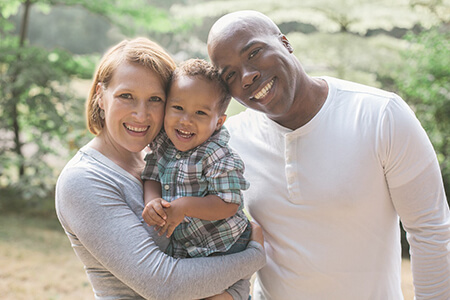This is a lesson summary. The full lesson can be viewed by purchasing an online course subscription.
Learning Objective
In this lesson we will learn about the reproductive system in humans.
Learning Outcomes
By the end of this lesson you will be able to:
- Discuss the overall function of the reproductive system.
- Describe the structure and function of the different organs and glands that make up the male and female reproductive systems.
- Describe the changes that occur in males and females during puberty.
- Discuss the main processes and hormones involved in the menstrual cycle.
- Discuss the main processes involved in pregnancy, foetal development and birth.

(Image: Public Domain Pictures)
Lesson Summary
- Reproduction involves the fertilisation of female egg cells by male sperm cells.
- The primary function of the male reproductive system is to produce sperm cells and transfer them to the female reproductive system.
- The primary functions of the female reproductive system are to produce egg cells for fertilisation and support the development of offspring.
- The male and female reproductive systems also produce sex hormones that regulate the reproductive system and determine secondary sex characteristics.
- The male reproductive system consists of:
- The testes – the primary reproductive organs, where sperm cells and testosterone are produced.
- The penis – the copulatory organ that transfers sperm into the female vagina during ejaculation.
- The scrotum – a supporting pouch for the testes, that regulates the temperature of sperm.
- The epididymides – coiled and folded tubules attached to the testes, where sperm cells mature.
- The seminal vesicles – a pair of glands that secrete a fluid rich in sugars that nourishes and protects sperm.
- The prostate gland – a gland that secretes a thin, milky fluid that nourishes and protects sperm.
- The Cowper’s glands (bulbourethral glands) – a pair of glands that secrete a clear mucus that lubricates the urethra.
- The sperm ducts (vasa deferentia) – tubes that transport sperm from each epididymis to the urethra during ejaculation.
- The urethra – a tube that transports both semen and urine out of the body via the penis.
- Seminal fluid (semen) – a mixture of substances produced by the seminal vesicles, prostate gland and Cowper’s glands, that mixes with sperm as it leaves the body.
- The female reproductive system consists of:
- The ovaries – the primary reproductive organs, where egg cells, oestrogen and progesterone are produced.
- The uterus (womb) – a sac that supports a developing embryo, consisting of the corpus, cervix, and endometrium.
- The fallopian tubes – tubes that link each ovary with the uterus, through which eggs travel and can be fertilised.
- The vagina – entry point of the reproductive tract, which receive the penis during copulation and forms part of the birth canal.
- The Bartholin’s glands – a pair of glands that secrete mucus that lubricates the vagina.
- The labia – folds of skin that cover and protect the vagina, urethra and clitoris.
- The clitoris – a small outgrowth in front of the urethra, containing a large number of nerve endings.
- The breasts – glands that produce milk to nourish infants.
- Puberty is a period of change that results in sexual maturity and the development of secondary sex characteristics in males and females.
- In males, it results in the ability to produce mature sperm and is associated with enlarged testes and penis, increased muscle growth and body hair.
- In females, it results in the ability to produce mature eggs and is associated with the first menstruation, breast development, widening of the hips and increased body hair.
- The menstrual cycle is a series of changes that take place in the female reproductive system in anticipation of pregnancy.
- It is regulated by changes in hormone levels and involves ovulation, followed by migration of the egg to the uterus, with corresponding changes to the lining of the uterus.
- If pregnancy does not occur, the lining of the uterus is shed through the vagina and the cycle repeats.
- To fertilise an egg, a sperm cell must swim through the cervix into the uterus, then into the correct fallopian tube. Upon reaching the egg, the successful sperm burrows through the corona radiata, then penetrate the zona pellucida.
- A fertilised egg divides to form a blastocyst, which embeds in the endometrium – a process called implantation.
- During the first eight weeks of pregnancy, the developing baby is referred to as an embryo; after eight weeks, it is referred to as a foetus.
- The developing baby is enclosed in a sac called an amnion, which contains amniotic fluid. Later, a placenta develops which connects the foetus to the mother’s blood supply.
- The birth process begins with contractions of the uterus, followed by dilation of the cervix, bursting of the amniotic sac and delivery of the baby and placenta.

(Image: badski007, Pixabay)
(Header image: frenta, Adobe Stock)
